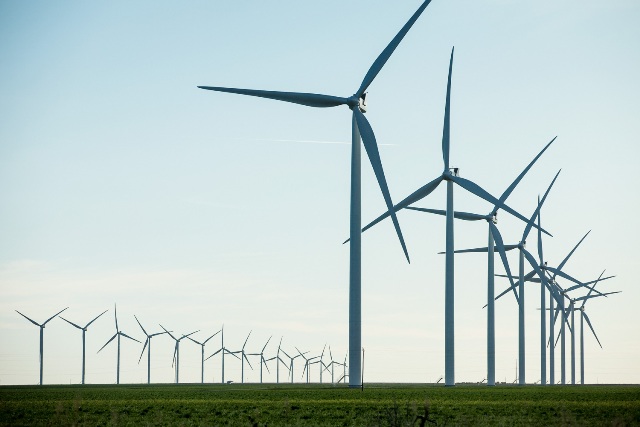Support CleanTechnica’s work through a Substack subscription or on Stripe.
China is leading the world in renewable energy. Not only does it generate more of it than any other nation, it is also exporting its clean energy technology to other countries at a furious pace. This week the New York Times published two reports about renewables in China that explain how that country is making all this happen and point out that there are costs to China’s push for renewables that seldom get reported.
162 Square Miles Of Solar Panels
Last month, China President Xi Jinping told the United Nations his country would reduce its greenhouse gas emissions across its economy and would expand renewable energy sixfold in coming years. The New York Times called it “a moment of global significance for the nation that is currently the world’s biggest polluter.”
China is an enormous country. 90 percent of its people live in the eastern part of the country, where sunshine is muted and winds are normally too slow to power turbines reliably. The western part of China is just the opposite. It has abundant sunshine, wind, and rushing rivers, all of which are ideal for making renewable electricity. But it is a thousand miles or more from China’s densely populated cities. More about that later.
China has made a portion of Tibet into a center for its clean energy plans. In an area that includes mountains and plateaus, it has constructed a 162-square-mile renewable energy development. 10,000 feet high, solar panels stretch from horizon to horizon across an area 7 times larger than Manhattan.
Because the air at that elevation is so clear, those panels are bathed in bright sunshine. Cooler temperatures also help maximize the output from the panels. There are also dozens of wind turbines that spin in the evening breezes just as the sun begins to set. A number of dams on Tibet’s fast flowing rivers add hydropower to the clean energy mix.
The primary group of solar farms, known as the Talatan Solar Park, dwarfs every other cluster of solar farms in the world. It covers 162 square miles in Gonghe County, an alpine desert in the sparsely inhabited Qinghai province in western China. The primary objective for building such massive clean energy facilities is to uncouple China from its dependence on imported fossil fuels — coal, oil, and LNG.
Renewable energy helps China power 30,000 miles of high-speed train routes and its growing fleet of electric cars. At the same time, cheap electricity enables China to manufacture even more solar panels, which dominate global markets and power artificial intelligence data centers, Times reporter Keith Bradsher wrote.
The Talatan solar project provides a massive 16,930 megawatts of power and is still expanding. Within three years, it will grow to be 10 times the size of Manhattan. The wind turbines nearby contribute another 4,700 megawatts of power, and hydroelectric dams nearby contribute another 7,380 megawatts.
To put that into perspective, at the turn of the century, China built the Three Gorges Dam — the largest hydroelectric project in the country’s history. Today, Bradsher reports, it adds enough solar panels to match the output from the Three Gorges Dam every three weeks.
Clean Energy Attracts Industry

Two pumped hydro projects are under construction in the mountains near the Talatan Solar Park. They will use excess solar power generated during the day to pump water up to reservoirs several miles high. At night, the water will flow back downhill to power turbines.
The prospect of inexpensive electricity is attracting new industries to the area. Some will use that electricity to turn quartzite into polysilicon for solar panels. Others want that electricity to power data centers. Those data centers will consume 40 percent less electricity because air conditioning is hardly needed to cool the computers at such high altitudes, where average temperatures are lower than near the coast. Air warmed by the data centers will be circulated through underground pipes to heat other buildings in the area, replacing coal-fired boilers in the process.
China has leveraged smart ideas to address the issue of having too much renewable energy at some times. The pumped hydro facilities will take care of that. They also are taking advantage of nature to reduce the demand for electricity in data centers, while abundant clean energy is being put to good use to manufacture more clean energy resources. If all this sounds too good to be true, perhaps it is.
China & HVDC Transmission
China has massive amounts of clean energy in its western provinces, but only 10 percent of its people live there. The demand for all those lovely electrons is in the coastal areas in the south and east. That is also where much of its industry is located. How does it get the electricity from where it is generated to where it is needed?
It will come as no surprise that China, with its penchant for detailed planning, has considered that problem and come up with a solution. Times reporter Keith Bradsher filed a companion story this week that focuses on the country’s massive network of ultra-high-voltage transmission lines and it reveals that there may be an ugly downside to clean energy miracle taking place in China.
“In China, the longest ultra high voltage power line stretches more than 2,000 miles from the far northwest to the populous southeast — the equivalent of transmitting electricity from Idaho to New York City,” Bradsher wrote. China has 41 high-voltage DC transmission lines with more in the works.
Many of China’s ultra-high-voltage lines use direct current technology, which allows them to carry electricity for long distances with barely any of the transmission losses that affect most high-power lines in other countries. According to data from the end of last year, the most recent data available publicly, 19 transmission lines operate at 800 kilovolts (800,000 volts). Another 22 operate at 1,000 kilovolts (1 million volts) and one uses 1,100 kilovolts.
That is some serious power. Those transmission lines use massive pylons that march across the landscape like Martian war machines. We don’t hear much about ordinary Chinese citizens complaining about government polities — NIMBY is not much of an issue, in other words. But those power lines have an impact on those who live and work near them.
A million volts overhead can lead to some powerful effects on people and structures nearby. Xu Shicai, a farm manager in Xuchong, a village next to lines that pass within 30 yards of homes, told Bradasher he has concerns about those transmission lines.
“When you hold an umbrella in the rain, sparks will fly from it, and you’ll feel numb,” he said. “When fishing, it’s hard to hold the pole under the wires, as your hands feel very numb.” Oooh, that doesn’t sound good!
The village’s small fish pond lies directly under the power lines. A “no fishing” sign has a cartoon of a skeleton being electrocuted and a graphic photo of a badly burned man who was apparently electrocuted. But Xu and other residents said that did not stop many villagers from fishing because the pond was so close by. He said he accepted the power line because it was an important national project, but he worried it might scare off visitors. “I’m used to it now,” he said. “But honestly, we don’t want more lines built here.” That is as close to NIMBY as you are likely to get in China today.
But despite the downsides, there is little question renewable energy has had a powerful impact on life in China. After the disaster at Fukushima in 2011, China abruptly cancelled plans to build more nuclear reactors and transitioned to building up its renewable energy capabilities.
The construction of ultra-high-voltage power lines has helped China reduce greenhouse gas emissions and the toxic air pollution that once blanketed its most industrialized regions. A University of Chicago analysis of satellite data in August found that air pollution in China had declined by 41 percent since 2014 — adding almost two years to the country’s average life expectancy.
The UC Air Quality Life Index says: “Air pollution is the greatest external threat to human life expectancy on the planet. The AQLI’s latest 2023 data reveals that permanently reducing global PM₂.₅ air pollution to meet the World Health Organization (WHO) guideline would add years onto average human life expectancy — or a combined 15.1 billion life years saved. The impact of PM₂.₅ on global life expectancy is comparable to that of smoking, more than 4 times that of high alcohol use, more than 5 times that of transport injuries like car crashes, and more than 6 times that of HIV/AIDS.”
In light of those benefits, a few sparks from your umbrella when it rains might be acceptable. We often speak of renewable energy in terms of how many homes it can power or how many jobs it will add to the local economy. Seldom do we address the benefits of breathing cleaner air. Perhaps renewable energy advocates should emphasize that part to the equation more forcefully.
Sign up for CleanTechnica’s Weekly Substack for Zach and Scott’s in-depth analyses and high level summaries, sign up for our daily newsletter, and follow us on Google News!
Have a tip for CleanTechnica? Want to advertise? Want to suggest a guest for our CleanTech Talk podcast? Contact us here.
Sign up for our daily newsletter for 15 new cleantech stories a day. Or sign up for our weekly one on top stories of the week if daily is too frequent.
CleanTechnica uses affiliate links. See our policy here.
CleanTechnica’s Comment Policy


.jpg)

